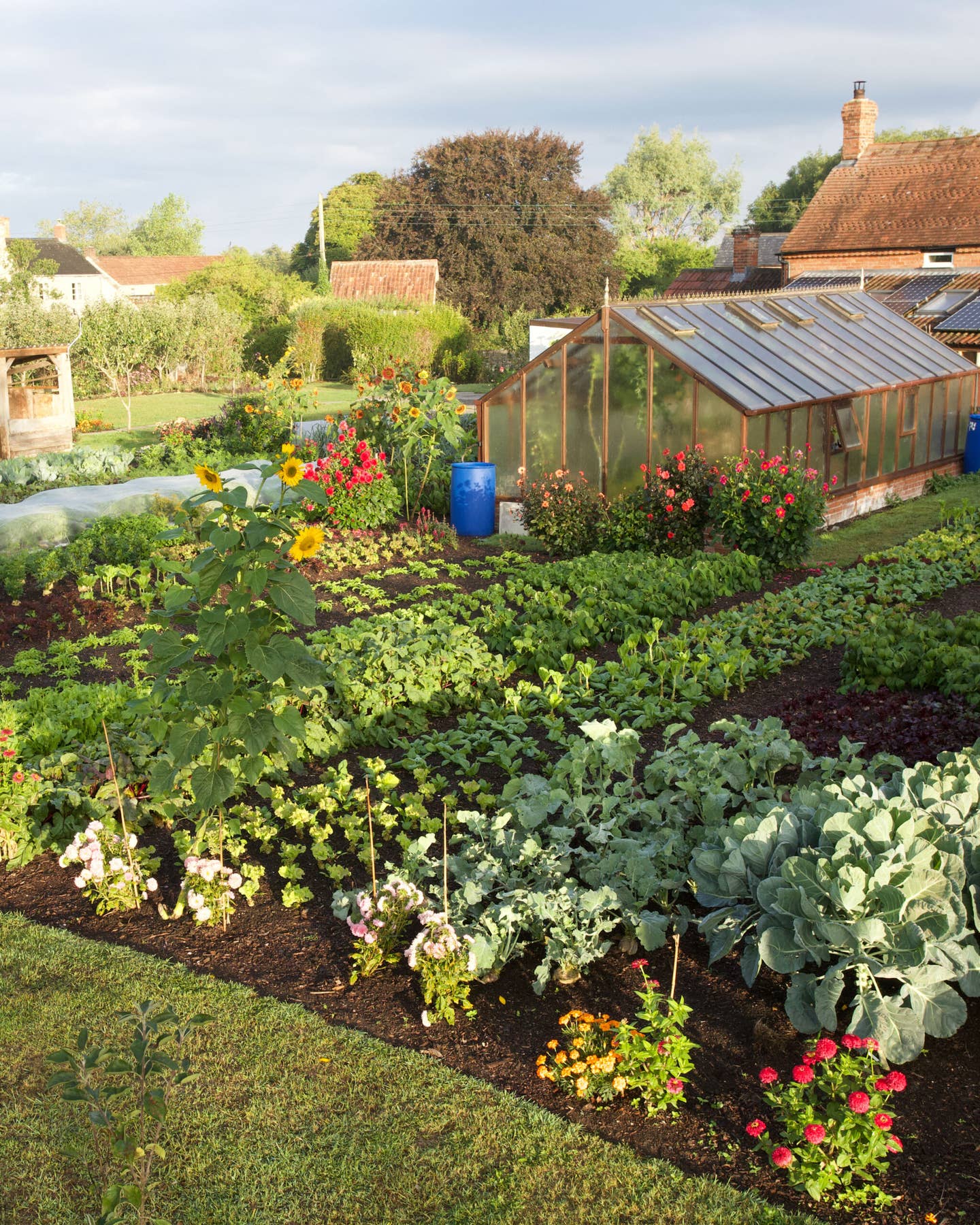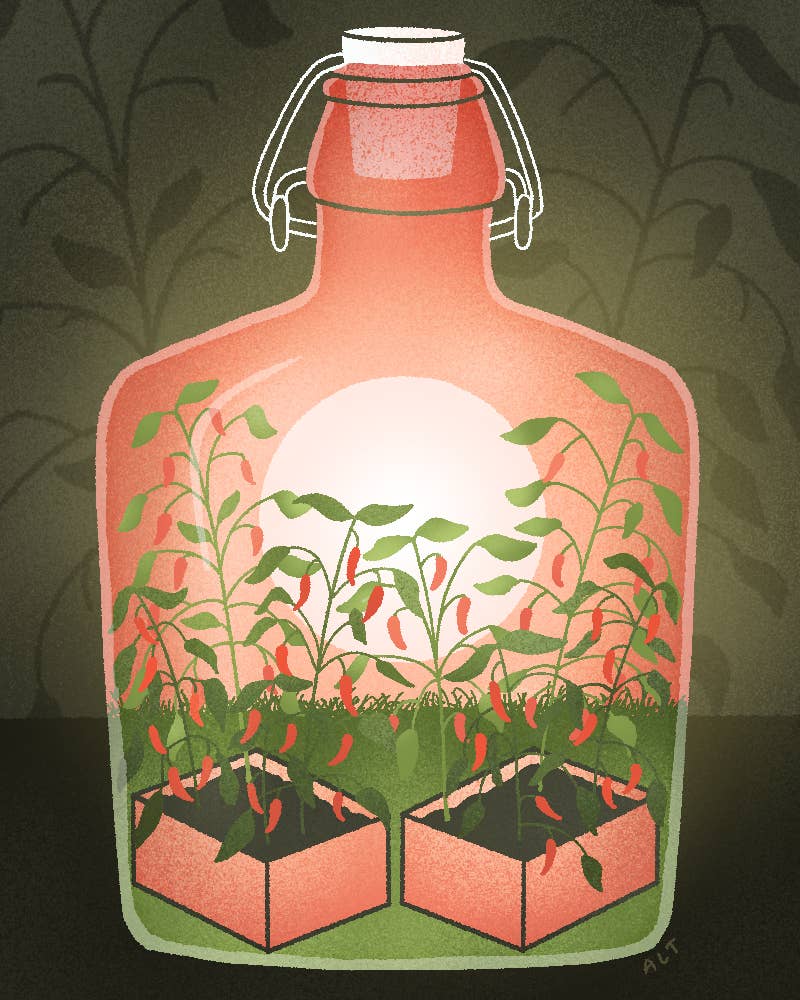I (Basically) Stopped Weeding Thanks to This Game-Changing Gardening Method
Tilling is out. ‘No Dig’ is in.

When I first saw Zara’s garden, it was waist-high in stinging nettles, thistles and other scary weeds. Mallow, bindweed, green alkanet, dock … In the five years the vegetable plot had been uncultivated, an impenetrable thicket had taken over. Zara, a woman from Sarajevo who moved to London in the 1980s, was now in her eighties. She’d been renting this piece of ground in West London for over 30 years but was no longer able to care for it. I asked if she’d let me try to revive it. When she said yes, I was thrilled.
Little did I imagine that, in just a few months, I'd be growing over 30 kinds of vegetables there—with hardly any weeds in sight, a testament to a method called No Dig that would completely change my perspective on gardening.
The plot was an allotment, a British institution that dates back to Anglo-Saxon times. Allotments took their present form in the 1920s, when the government encouraged city dwellers and servicemen returning from the war to grow food on land owned by local councils and boroughs. To this day, allotments are often found along railway lines, rivers, and in other unused spaces. They’re protected by law and exist in varying forms all over Europe. Ours is in Chiswick, sandwiched between the River Thames and a large sports club.
Once I had the go-ahead from Zara in October 2021, I was eager to get going—but the task was overwhelming. The plot, as big as a doubles tennis court, was thick with weeds (and the millions of weed seeds deposited over the years). I had watched my mother lose her battles with bindweed years before so I knew I wanted to avoid back-breaking weeding. My garden was going to be organic and I would not be using chemical weed killers or fertilizers that do so much damage to the environment. And digging was against my other rule: Don't disturb the soil.
Writing about soil microbiologists Claude and Lydia Bourguignon in 2003 taught me that soil is home to millions of organisms that maintain its health. Two-thirds of the world’s creatures live underground, from worms and woodlice at the top to invisibly tiny critters deep down. Turning the soil (or, worse, spraying it with a weed killer) disrupts and often kills them. The mycelium—the fungal super-network that exists below ground and helps plants, including trees, grow and communicate with one another—is also damaged by digging the soil.
I knew what I wanted but wasn’t sure how to achieve it. Then I found Charles Dowding. Dowding, an Englishman based in Somerset, has spent over 40 years growing and selling organic vegetables. Over time he developed No Dig gardening, a method that—I soon discovered—commanded an army of online enthusiasts eager to spread the gospel. No Dig enriches the soil without disturbing it and reduces labor and weeds by using compost spread on top of the soil. You plant into the compost and let the roots find their way down into the soil beneath. From my research, I understood the theory. You simply place a sheet of unglazed cardboard onto the weeds or grass, cover it with four inches of compost, and plant the seeds or seedlings into that. Any weed seeds on the soil’s surface are buried under the cardboard and, deprived of light, can’t germinate. A few resistant weeds do work their way up through the disintegrating cardboard after a few weeks, but they’re easy to spot and remove. Eventually, even bindweed gives up the fight.
It sounded too good to be true, but I couldn’t wait to try it. My No Dig journey began in winter—that’s when I covered most of the allotment with thick black tarpaulins to get a head start on smothering the waist-high weeds. By March I was ready to peel back a small amount of the cloth the size of my first new bed. Most of the weeds had died. Those with bigger roots at risk of restarting, like stinging nettles or alkanet, I eased out with a trowel. I laid a large piece of recycled cardboard over the exposed soil and covered it with four inches of store-bought compost. Then I started planting. As easy as that.
With every sprouting plant, I became more ambitious. The bulk of the weeds were gone, and the bones of the former garden began to appear: paths, borders, walkways. Using more cardboard and compost, I created beds for asparagus, flowers to encourage pollinating insects, and a section for the fruit bushes loved by the British: blackcurrants, redcurrants, and gooseberries, underplanted with strawberries. Everything grew and was full of flavor.
In no time, I was harvesting. First came the broad beans and peas, followed by onions, leeks, and spinach—including the abundant everlasting spinach-beet whose taste is milder than classic spinach. Then came the potatoes, which are easier to pull up with No Dig. Again, working against conventional wisdom, Dowding doesn’t dig trenches for his potatoes but rather places them on the surface of the soil and mounds them with compost.
By midsummer, I was obsessed with No Dig. Not only was I producing far more vegetables than I could eat myself; I was doing it much more easily than my neighbors who were using more conventional methods. My plants were healthier, less prone to attacks by insects, and abundant. From watching Dowding's YouTube videos and studying his books (No Dig is my favorite), I learned many tricks. For instance, in damp England, where slugs and snails devour so many crops, Dowding suggests removing the lowest leaves of plants such as cabbage or lettuce once they begin to yellow, as these are the kind the slugs are most interested in. Equally, eliminating any decomposing wooden borders from the beds is another easy way to discourage the slugs. Dowding also advocates leaving the roots of vegetables in the ground after they have finished their growing cycle to create more organic matter in the soil.
Dowding was not the first gardener to experiment with No Dig. Farmers all over the globe have practiced no-till methods for millennia, and there are similar systems such as Masanobu Fukuoka’s One-Straw method and Ruth Stout’s No-Work variant of permaculture, but Dowding’s is the only approach to feature compost as surface mulch. That’s what makes it so approachable and easy for people like me, no matter how challenging the soil conditions are. You feed the soil from above (as happens naturally with falling leaves, etc), and leave the work to the worms and other creatures to carry the nutrients down into the lower ground. I’m making my own compost now and will use that to spread about one inch onto the beds this winter.
By the time September rolled around, No Dig had changed my life. Not only had I produced enough vegetables to last me through the winter—and give lots to friends—but going to the allotment, which is about a mile from my house, had become the most pleasurable part of my daily routine. Instead of dreading the grind of weeding and seeing my plants devoured by pests, it has been a thrill to watch my vegetables grow, and then to cook them.
This growing season, with a year of No Dig gardening under my belt, I’m branching out and planting vegetables I’d never dared to experiment with before. Red-veined spinach, six types of onions, rose-streaked celery, purple string beans, pink fir apple potatoes… The time that was freed up from not having to dig or weed I devoted to tracking down and ordering a wide variety of seeds—which will no doubt make this year’s meals more varied, unusual, and delicious. As we speak, I’m bringing home armfuls of sweet fresh peas, which go into risi e bisi, which is easier than risotto as it requires less stirring; I always add a teaspoon of fennel seeds to mine.
Come summer, salads will take center stage in my house again. But this year, I’ll be reaching for bitter radicchio and escarole, peppery nasturtium leaves, wild arugula, and sweet purple lettuces.
Then, as many bemoan the arrival of cold weather, I’ll be content roasting squashes with estate-bottled extra-virgin olive oil and Sicilian capers preserved in salt. And I’ll get through the winter cooking kale, cabbage, and cima di rape (from seeds bought in Italy).
Because of No Dig, I am now surrounded year round by all the chutneys, jams, soups, and other preserves my garden gave me. I’m blessed with so much produce that I recently bought an enormous freezer to store it all (and a greenhouse for my seedlings)—a small price to pay for all of No Dig’s riches.
Keep Reading
Continue to Next Story










